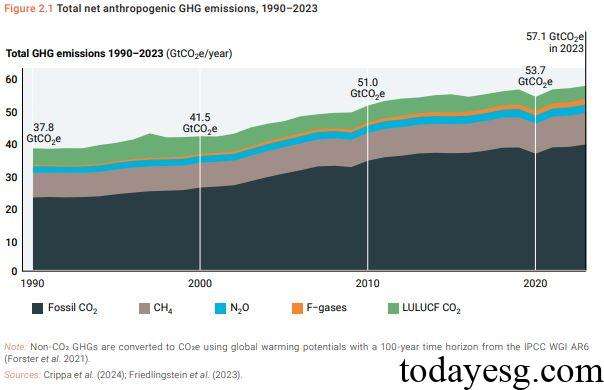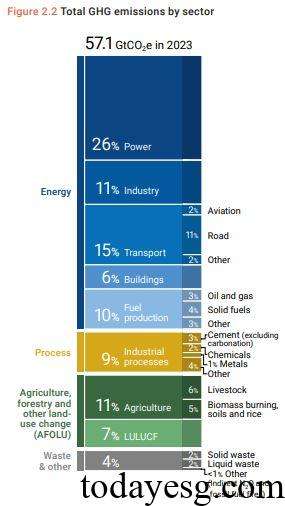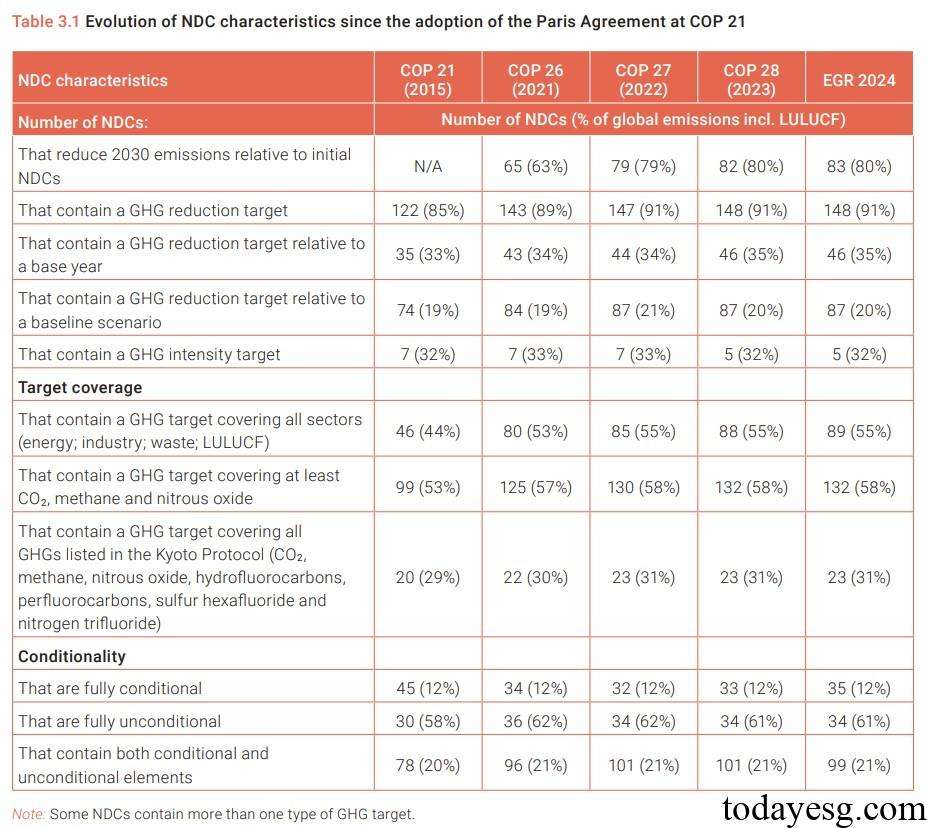2024 Emissions Gap Report
The United Nations Environment Programme releases 2024 Emissions Gap Report, which aims to analyze the gap between current global carbon emissions and the net zero trajectory and propose measures to narrow the emissions gap.
The United Nations Environment Programme believes that global greenhouse gas emissions reach a historic high in 2023, and it is expected that the global temperature will rise by 2.6 degrees Celsius this century. Only by reducing carbon emissions by 7.5% annually before 2035 can the 1.5-degree Celsius warming target be achieved.
Related Post: International Energy Agency Releases Global CO2 Emissions Report
Current Global Emission Trends
In 2023, global greenhouse gas emissions reach 57.1 billion tons (measured based on carbon dioxide), an increase of 1.3% compared to last year, which is higher than the growth rate of greenhouse gas emissions from 2010 to 2019 (0.8%). Carbon dioxide is the largest greenhouse gas emissions, reaching 43 billion tons, followed by methane (equivalent to 9.8 billion tons of carbon dioxide), nitrous oxide (equivalent to 2.6 billion tons of carbon dioxide), and fluoride (equivalent to 1.7 billion tons of carbon dioxide). In 2023, the global per capita greenhouse gas emissions is 6.6 tons, with developed countries having relatively high per capita emissions and developing countries having lower per capita emissions.

From an industry perspective, the power sector has the highest carbon emissions in 2023, reaching 15.1 billion tons of carbon dioxide. Next are the transportation industry (8.4 billion tons of carbon dioxide), agriculture (6.5 billion tons of carbon dioxide), and industry (6.5 billion tons of carbon dioxide). Although global carbon intensity has started to decline since 2013, the overall growth of economic activity still leads to an increase in total carbon emissions. By 2023, global renewable energy production capacity increases by 50%, and investment in renewable energy has surpassed traditional energy. Data shows that emissions from the global power sector may soon peak as new electricity can be met by renewable energy sources.

Climate and energy policies are important factors affecting carbon emissions, and research shows that successful policies may reduce global carbon emissions by 600 million to 1.8 billion tons. Climate and energy policies include carbon pricing, subsidies, energy efficiency requirements, etc. Since 1990, global climate and energy policies have reduced billions of tons of carbon emissions.
Nationally Determined Contributions and Commitments
Nationally Determined Contribution (NDCs) is a commitment that countries need to take measures to fulfill and report progress based on it. Compared to the initial NDCs, more countries have already included multiple greenhouse gas emission reduction targets. The United Nations Environment Programme studies the NDCs data from 2015 to 2023 and obtains the following results:
Number: By 2023, 80% of countries have reduced their carbon emissions targets by 2030, an increase of 17 percentage points compared to 2021. 91% included in greenhouse gas emission reduction targets, 35% included in greenhouse gas emission reduction targets relative to the baseline year, 20% included in greenhouse gas emission reduction targets relative to the baseline scenario, and 32% included in greenhouse gas intensity targets.
Target Coverage: By 2023, 55% of NDCs include greenhouse gas targets for all industries, an increase of 2 percentage points compared to 2021. 58% cover three greenhouse gases: carbon dioxide, methane, and nitrous oxide, while 31% cover all greenhouse gases in Kyoto Protocol.
Conditionality: 12% of NDCs in 2023 are fully conditional and consistent with 2021. 61% are completely unconditional, and 21% contain both conditional and unconditional elements.

How to Narrow the Emissions Gap
The United Nations Environment Programme believes that narrowing the emissions gap can be achieved from the following perspectives:
- Translating global emission reduction targets into national emission reduction targets: Allocating carbon emission targets to the national level using different principles, including cost-effectiveness or fairness, within the given warming target constraints.
- Increasing climate investment: Global climate investment needs to increase at least six times from current levels, especially for emerging markets and developing economies that require more investment to support sustainable development. These investments need to come from channels such as the public sector, private sector, multilateral development banks, and preferential financing.
Reference:
UNEP Emissions Gap Report 2024
ESG Advertisements Contact:todayesg@gmail.com








